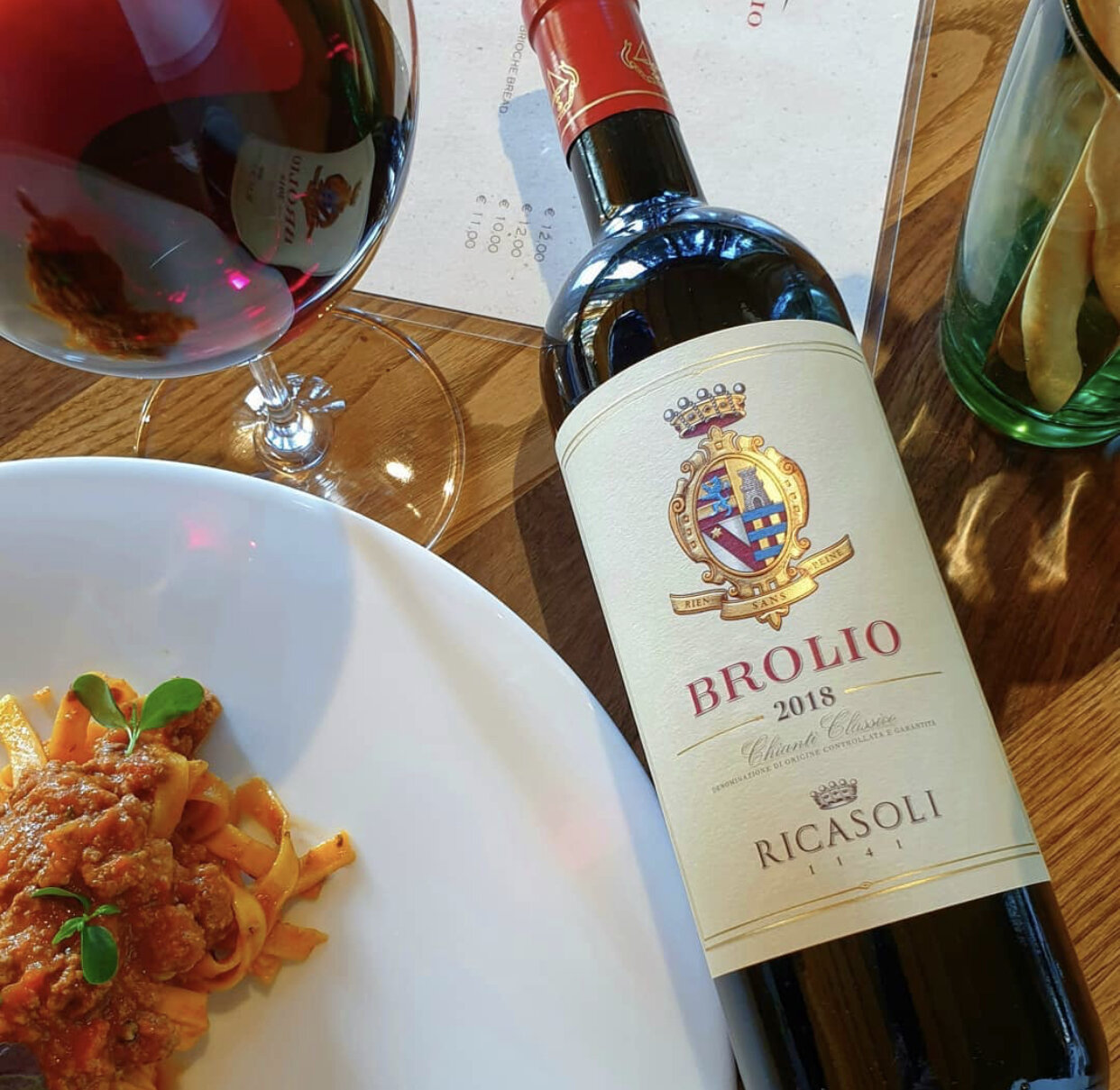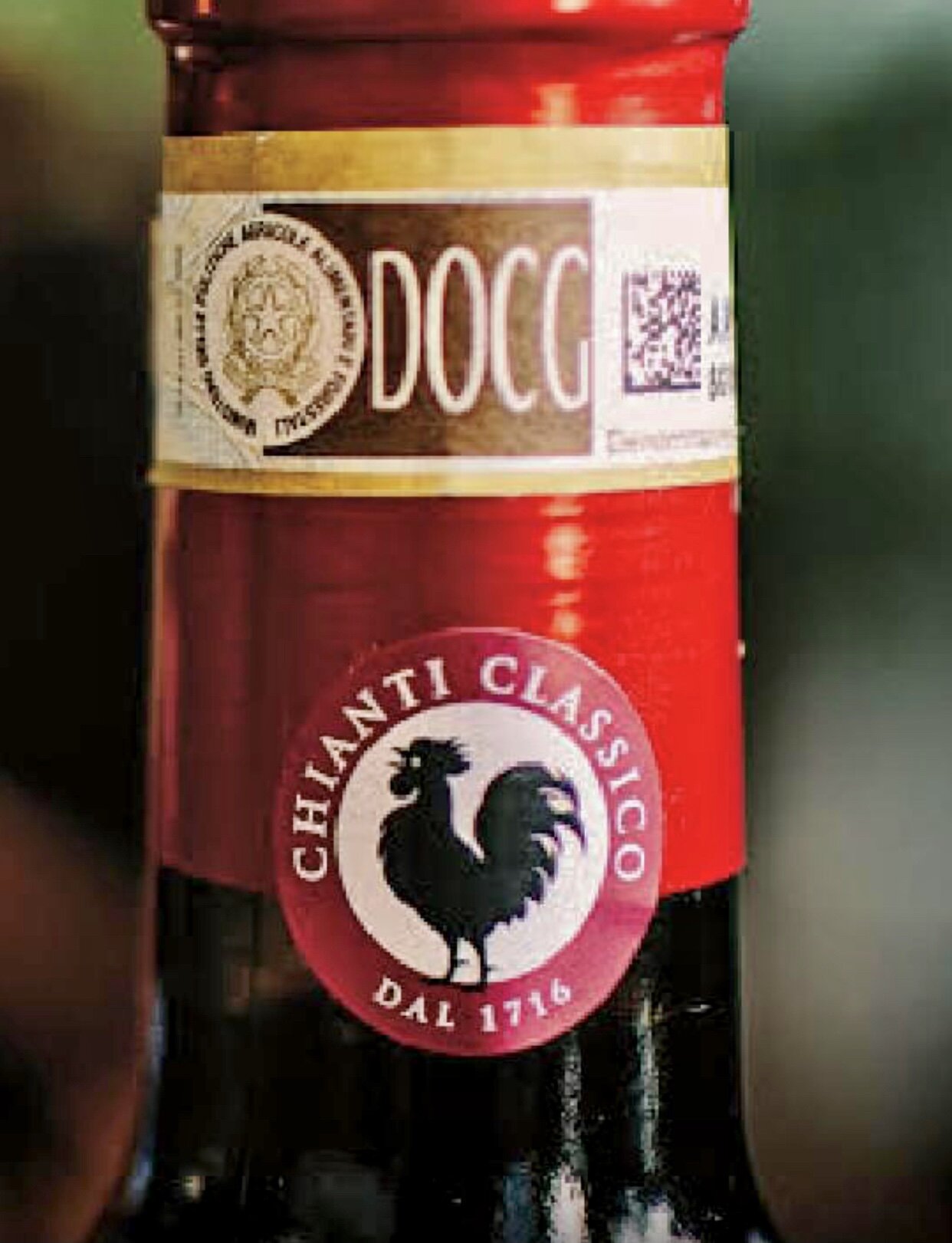Chianti Classico: From Fiasco to Fantastico
/More so than in any other culture, Italians regard wine as an essential expression of their heritage, and local wines are meant to go with the simple, yet delicious, regional dishes. From Nebbiolo in the north, to Nero d’Avola in the south, the regions of Italy can be defined by the grapes that grow there.
In Tuscany, where Sangiovese is king, you will find some of the best food-pairing wines of Italy, particularly those from Chianti Classico, a stunning area of vineyard and olive grove-covered hills. These wines, known for a lively acidity that refreshes the palate sip after sip, range in style from light-bodied, with juicy notes of red cherry, to fuller-bodied with more concentrated fruit, leather, herb and spice notes.
Photo: @Ricasoli1141 (Instagram)
Chianti Classico is a great choice with many types of food, not only Italian classics like caprese salad and pasta with sausage ragù — the wine pairs equally well with more unexpected choices such as Japanese sushi, Thai curry and Chinese pork stir fry. And keep these wines in mind for the holidays. They give an energetic lift to heavy Thanksgiving dishes, for example, like gravy-laden turkey and rich stuffing.
Classico, the OG Chianti
With so many bottles that have the word Chianti written on them, you may be wondering, “What’s the difference between Chianti and Chianti Classico?” It’s a bit confusing, but from a purely geographic point of view, it’s quite simple: there is only Chianti, an area in the heart of Tuscany. Chianti Classico is the smaller (but still quite large) winemaking zone situated within the Chianti geographic region. Historically, Chianti Classico is the original winemaking zone of the region, demarcated in 1716 by the Medicis (although not called Classico at the time).
Map of Italy, with tuscany in red.
Outline of Tuscany with Chianti Classico in the center.
For more information, visit chianticlassico.com.
Now here’s where it gets a little tricky. You would think, based on its position within the larger Chianti region, that the wines of Chianti Classico would be a sub-category of Chianti wines. But they’re not! In enological terms, Chianti Classico is a distinct and separate winemaking area with its own consortium and unique set of rules that govern how the wine is made, including the requirement that the wines be at least 80% Sangiovese and aged a minimum of one year in barrels.
SOMETHING FOR EVERYONE
What you can’t tell from the map above, though, is how large and geographically diverse Chianti Classico is. Within its nearly 20,000 acres of rolling hills, largely situated between the cities of Florence (Firenze) and Siena, are huge differences in terroir.
“The beauty of Chianti Classico,” says Roberto Stucchi, owner of the award-winning Badia a Coltibuono winery, “is how diverse the territory’s altitudes, exposures and soils are. There’s something for everybody depending on what style you prefer.” Stucchi admits that it can be a bit confusing but he says that it’s definitely interesting and a lot of fun. “You get amazing wines at all the levels,” he says, “ Annata, Riserva, and Gran Selezione, with each having something to say.” (See below, at the bottom of this article, for more information on these three categories of Chianti Classico).
THRIVING BEYOND A BUMP IN THE ROAD
Today, Chianti Classico is considered by many to make the highest-quality wines of the entire Chianti geographical region, but they weren’t always the ones used to impress the in-laws. The region still suffers from its decades-ago poor image as inferior, mass-produced wines. Many people, when they hear the word Chianti, still think of it as cheap, acidic wine in bulbous straw-covered bottles, ironically called fiascos.
“Chianti’s success proved its undoing,” says Lauren Mowery in The Wine Enthusiast. “In the 1970s, high demand led to a rash of vineyard plantings. Rules that allowed or even required inferior grapes contributed to overproduction and underwhelming wines. Prices and the region’s reputation plummeted, something many producers still battle.”
Not helping the situation, in the 1990s, many producers jumped on the “bigger is better” bandwagon by blending international varieties like Cabernet Sauvignon, Merlot and Syrah into the Sangiovese to make the wines rounder and fruitier. By trying to appeal to what was believed the market desired, they were sacrificing the very qualities of a good Chianti Classico: fragrant, juicy, low alcohol and lively wines — ideal partners at the lunch or dinner table.
Sangiovese grapes ready to be picked.
Sangiovese is a grape that, more so than other varieties, has a unique ability to respond to and translates its environment and can be pushed in many directions.
“You can make an extremely concentrated wine out of it, says Stucchi, “but that goes against the true nature of Sangiovese which is a little bit lighter.” While Badia a Coltibuono’s philosophy has always been a natural expression of Sangiovese, he says that many producers are now heading in a similar direction, looking for a lighter expression of the grape. “If you allow more extraction and concentration I think you lose something in the process,” asserts Stucchi.
A NEW GOLDEN AGE FOR CHIANTI CLASSICO
As more producers are returning to a traditional style, focusing on quality, instead of quantity, Chianti Classico’s reputation is on the up-and-up. Long gone are the straw-covered bottles, now nostalgically remembered, by those of a certain age, as the wax-covered candle holders they once were.
The iconic red rooster found on every bottle of Chianti Classico.
After a couple of decades of refinement, many of the wines are better than they’ve ever been. So it’s not surprising that Chianti Classicos are now receiving an impressive amount of accolades: from a record number of “Three Glasses,” (the top award by Gambero Rosso, the authority on Italian wine quality) to high praise from wine critics like Antonio Galloni of Vinous who said he couldn’t remember the last time he was so excited about the region and its wines.
“There are many reasons to explain the ‘renaissance’ of Chianti Classico,” says Baron Francesco Ricasoli owner of his family’s historic Ricasoli 1141 winery, “such as a new generation of winemakers and vineyard owners with the will and need to improve quality in order to sustain business in a territory where it is very expensive to produce wine.”
Ricasoli says that now is the time for Chianti Classico to communicate to the world about these great Sangiovese wines that deliver “interesting and unique character, personality, structure, finesse, elegance and drinkability.”
Another factor helping Chianti Classico’s rebirth is a large and ongoing research project, “Chianti Classico 2000” that has led to significant advances in viticulture. Based on the results, Tenuta di Lilliano, a winery in the hilly Castellina area where some of the best Chianti Classicos are made, has planted new clones of Sangiovese exclusively in its youngest vineyards. “The continuous research of better Sangiovese clones that are adjustable to climate change is a key factor,” says Alessandro Ruspoli, owner of Tenuta di Lilliano.
And like Ricasoli, consumer marketing is another area that Ruspoli feels strongly about. He says that producers need to acknowledge and market Sangiovese as the great grape variety that it is. “It’s fundamental to keep investing in the promotion of our wines,” says Ruspoli, “and educating people about Chianti Classico.”
This past February, right before the world’s pandemic shut down, I was fortunate enough to spend a few days in Florence at the Chianti Classico Anteprima 2020, an annual press preview of the wine’s new vintages. During the event, and since returning home, I’ve tasted many superb Chianti Classicos.
And what I find to be true in all great wine-producing areas, is that, regardless of the vintage or the category of wine (entry level to top-of-the-line), great producers always find a way to make good wine. Long-time favorites like Badia a Coltibuono, Casanova di Neri, Monsanto, Castello di Bossi, Ricasoli 1141, Fontodi, Fèlsina, Castellare di Castellina and Tenuta di Lilliano continued to impress.
Additionally, I was happy to discover new-to-me producers that are making outstanding wines, like Monte Bernardi, Villa a Sesta, Volpaia, Poggerino, Le Masse, Casale dello Sparviero, I Fabbri, and Antico Podere Casanova.
With 350+ wineries in Chianti Classico, there are many other producers worth seeking out, including Bindi Sergardi, Capannelle, Carpinetto, Castello di Ama, Castello di Gabbiano, Castello di Selvole, Castello di Verrazzano, Cecchi, Fonterutoli, Mazzei, Ormanni, Querciabella, Querceto di Castellina, Tenuta di Bibbiano, and Tenuta Orsumella.
As a bonus, many of these wines can be found at great value price points. I suggest you purchase a few different ones to taste side by side during a meal to see which are your favorites. One thing is certain: you’ll be able to find the perfect Chianti Classico for whatever’s on your table tonight.
The beautiful labels of Chianti Classico.
THE THREE CATEGORIES OF CHIANTI CLASSICO
Chianti Classico wines are certified, grouped and labeled according to three classifications: Annata, Riserva, and Gran Selezione.
Annata, simply labeled as Chianti Classico, is a fresh and fruity wine, ideal for daily consumption, and required to be aged twelve months before release. Many believe a well-made Annata is the most classic and representative of Sangiovese’s ability to express the terroir of Chianti Classico.
Riserva wines come from what are considered the best vineyard sites, and have been aged a minimum of 24 months, with at least three months in the bottle before being released to the market. These elegant and complex wines are better paired with more complex foods.
Gran Selezione wines are made from estate-grown grapes and aged for 30 months, three of which must be in the bottle. This category is considered the highest standard of quality, yet that status could be debated, depending on your preference in wine style. Of the three categories, Gran Selezione wines, ideal for hearty dishes, offer the greatest power, concentration, and complexity, usually with silky tannins and many layers of flavor.
















